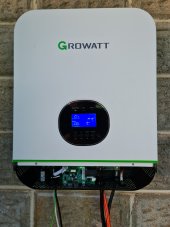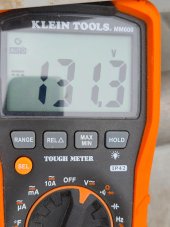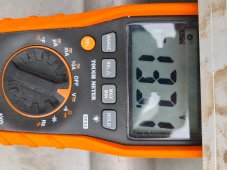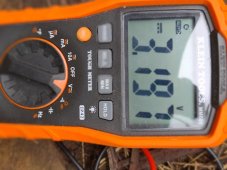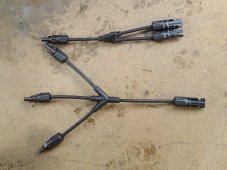AlanH
New Member
- Joined
- Mar 2, 2021
- Messages
- 99
UH OH!
Looks like I may have cooked the charge side of my controller/inverter. The inverter works but not the solar controller. I have 12 x 250W 38VOC 8.3A panels on the roof. I have had the system working fine with just one series string of 4. Yesdy I tried to connect up all three strings of 4 so 3P4S. This equals 136V tested, 25A. Specs for the controller is 145V VDC. Would that be VOC? Anyway thats what the manual states, VDC. Well within it’s amperage specs. Now I have a circuit breaker of 32A between the panels and the controller. Um, yep the breaker is an AC unit. When I connected the 50A anderson plug, I got a crack at one of the panels and the charge side of the controller went out. I flicked the breaker but it continued to arc across the terminals inside the breaker obviously. Checked with one panel but no go. Obviously the controller is damaged. The thing that I don’t understand is you cannot connect panels up wrong with there being male/female connector. ImI’m using the wire type three way joiners to connect the strings.
Can anyone see where a potential issue may lie as I’m stumped.
The controller is a Growatt SPF5000TL.
Onya’s
Looks like I may have cooked the charge side of my controller/inverter. The inverter works but not the solar controller. I have 12 x 250W 38VOC 8.3A panels on the roof. I have had the system working fine with just one series string of 4. Yesdy I tried to connect up all three strings of 4 so 3P4S. This equals 136V tested, 25A. Specs for the controller is 145V VDC. Would that be VOC? Anyway thats what the manual states, VDC. Well within it’s amperage specs. Now I have a circuit breaker of 32A between the panels and the controller. Um, yep the breaker is an AC unit. When I connected the 50A anderson plug, I got a crack at one of the panels and the charge side of the controller went out. I flicked the breaker but it continued to arc across the terminals inside the breaker obviously. Checked with one panel but no go. Obviously the controller is damaged. The thing that I don’t understand is you cannot connect panels up wrong with there being male/female connector. ImI’m using the wire type three way joiners to connect the strings.
Can anyone see where a potential issue may lie as I’m stumped.
The controller is a Growatt SPF5000TL.
Onya’s



